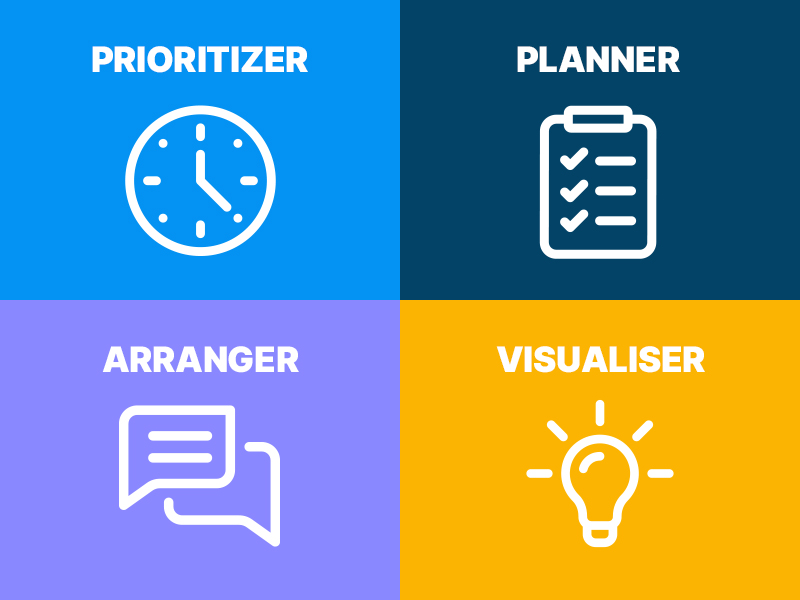Understanding Different Types of Work Styles: Finding the Best Fit for You

In today’s diverse workplace, understanding different types of work styles can be crucial for personal productivity and team success. Each individual brings a unique approach to how they tackle tasks and collaborate with others. Recognizing these varying styles can enhance team dynamics, improve job satisfaction, and boost overall efficiency. In this article, we’ll explore the most common work styles, their characteristics, and how they can best be utilized within a team or organization.
The Analytical types of work styles: Detail-Oriented and Data-Driven
Analytical types of work styles are the backbone of many data-driven industries. They thrive on logic, facts, and details, ensuring that every decision is backed by solid evidence. These individuals excel in roles that require critical thinking and problem-solving, such as finance, engineering, and research.

Analytical types of work styles prefer structured environments where they can delve deep into data and uncover insights. They are meticulous, often taking the time to thoroughly examine information before drawing conclusions. This attention to detail can sometimes slow down processes, but the accuracy and thoroughness of their work often prevent costly mistakes.
In a team setting, types of work styles workers are invaluable for their ability to provide clear, data-backed perspectives. However, they may need support in environments that require quick decision-making or high levels of creativity. Balancing their skills with those of more intuitive or big-picture thinkers can lead to a well-rounded and effective team.
The Organized types of work styles : Methodical and Process-Oriented
Organized workers thrive in environments where they can plan, schedule, and execute tasks in a systematic manner. They are excellent at managing projects, ensuring that every step is completed on time and within budget. These individuals excel in roles such as project management, operations, and administration.
Organized workers rely heavily on to-do lists, calendars, and detailed plans. They find satisfaction in ticking off completed tasks and maintaining order in their work environment. This methodical approach helps them stay on top of their responsibilities and reduces the likelihood of overlooked details or missed deadlines.
In a team, organized workers are often the glue that holds everything together. Their ability to keep track of multiple moving parts ensures that projects stay on course. However, they may struggle in chaotic or unpredictable environments where plans frequently change. Pairing them with more adaptable colleagues can help create a balanced and resilient team.
The Creative Worker: Innovative and Visionary
Creative workers are the innovators and visionaries within a team. They excel in roles that require imagination, such as marketing, design, and the arts. These individuals thrive on brainstorming new ideas, experimenting with different approaches, and pushing the boundaries of conventional thinking.
Creatives often work best in environments that allow for flexibility and spontaneity. They may struggle with rigid structures and prefer to have the freedom to explore and develop their ideas organically. While their innovative thinking can lead to groundbreaking solutions, it can also result in a lack of focus or difficulty in adhering to deadlines.
In a team, creative workers bring fresh perspectives and out-of-the-box solutions. However, they may need support from more detail-oriented or organized colleagues to ensure their ideas are feasible and implemented effectively. A balanced team will leverage the strengths of creative workers while providing the structure needed to bring their visions to life.
The Collaborative Worker: Team-Oriented and Cooperative
Collaborative workers are the team players who thrive on interaction and cooperation. They excel in roles that require communication, relationship-building, and teamwork, such as human resources, customer service, and sales. These individuals are skilled at mediating conflicts, fostering a positive work environment, and ensuring that everyone feels valued.
Collaborative workers prefer environments that emphasize teamwork and open communication. They enjoy working closely with others, sharing ideas, and contributing to group efforts. Their strong interpersonal skills make them adept at understanding and addressing the needs of their colleagues and clients.
In a team setting, collaborative workers are essential for maintaining harmony and cohesion. However, they may struggle in roles that require a high degree of independence or solitary work. Balancing their strengths with those of more independent or analytical colleagues can create a team that is both cooperative and efficient.
The Independent Worker: Self-Motivated and Autonomous
Independent workers are self-starters who excel in roles that allow for autonomy and self-direction. They are highly motivated, disciplined, and capable of managing their tasks without constant supervision. These individuals thrive in positions such as freelancing, remote work, and entrepreneurial ventures.
Independent types of work styles prefer environments where they can set their own pace and work on their own terms. They are often highly productive, managing their time and resources effectively to achieve their goals. However, they may struggle in highly collaborative settings where frequent communication and teamwork are required.
In a team, independent workers can be valuable assets for their ability to take initiative and complete tasks with minimal oversight. However, they may need support in developing their collaborative skills and integrating into team-based projects. A balanced team will respect their need for autonomy while encouraging open communication and cooperation.
The Adaptive types of work styles : Flexible and Versatile
Adaptive workers are the chameleons of the workplace, capable of adjusting to various roles, tasks, and environments with ease. They excel in dynamic settings where flexibility and versatility are key, such as startups, consulting, and event planning. These individuals are quick learners, able to pick up new skills and adapt to changing circumstances rapidly.
Adaptive workers thrive in environments that offer variety and challenge. They enjoy tackling different tasks and are often the first to volunteer for new projects or responsibilities. Their ability to pivot and adjust makes them invaluable in fast-paced or unpredictable industries.
In a team, adaptive workers types of work styles a level of flexibility and resilience that can help navigate change and uncertainty. However, they may struggle with consistency and long-term planning. Balancing their strengths with those of more stable and methodical colleagues can create a team that is both dynamic and dependable.
Conclusion: Embracing and Integrating Diverse types of work styles
Understanding the different types of types of work styles is crucial for creating a harmonious and productive work environment. By recognizing and valuing the unique strengths each style brings, teams can leverage their diverse talents to achieve common goals. Whether you’re an analytical thinker, an organized planner, a creative visionary, a collaborative team player, an independent selftypes of work styles starter, or an adaptive chameleon, there’s a place for you in the modern workplace. Embracing and integrating these diverse work styles can lead to greater innovation, efficiency, and job satisfaction for everyone involved.




